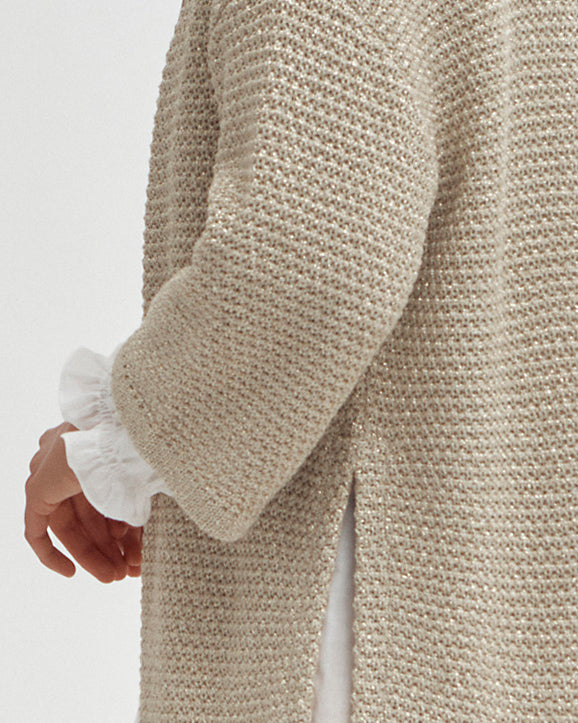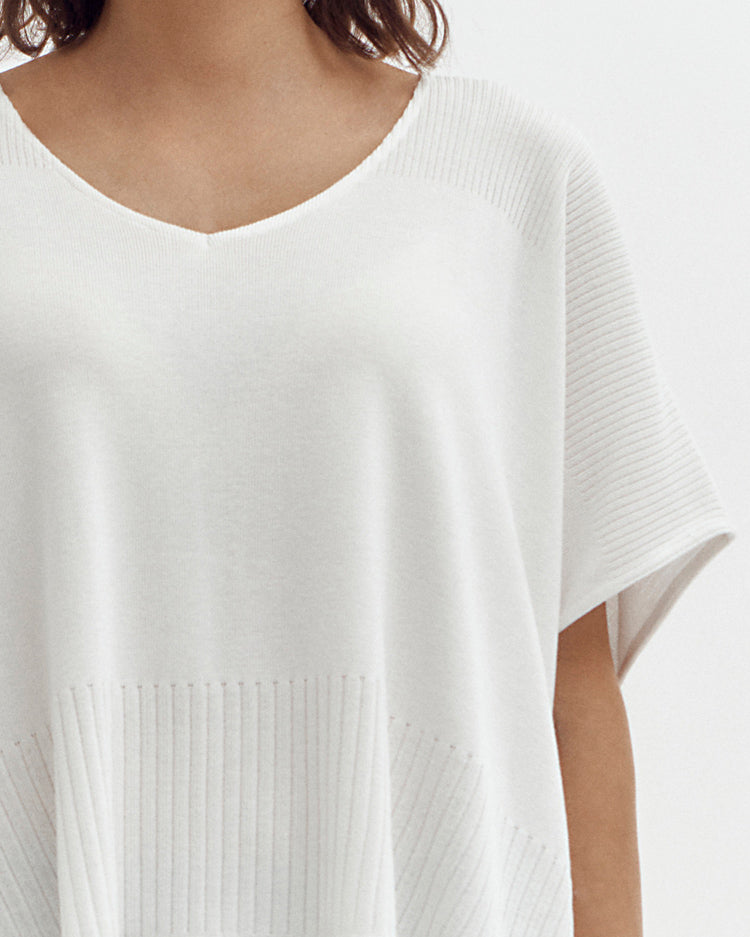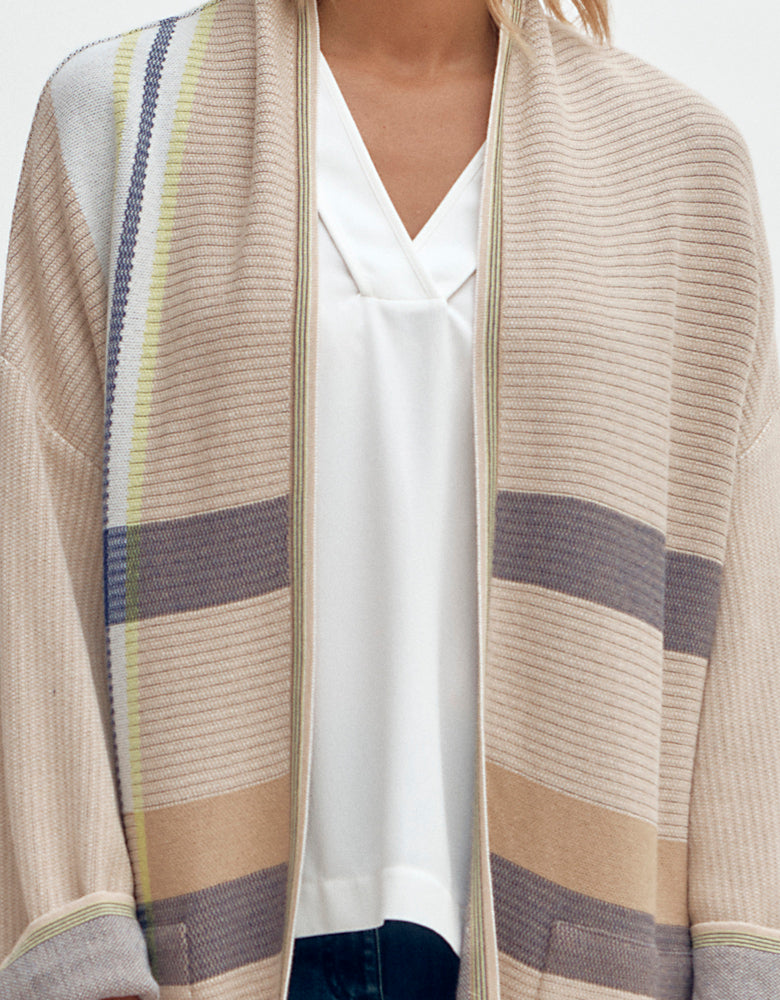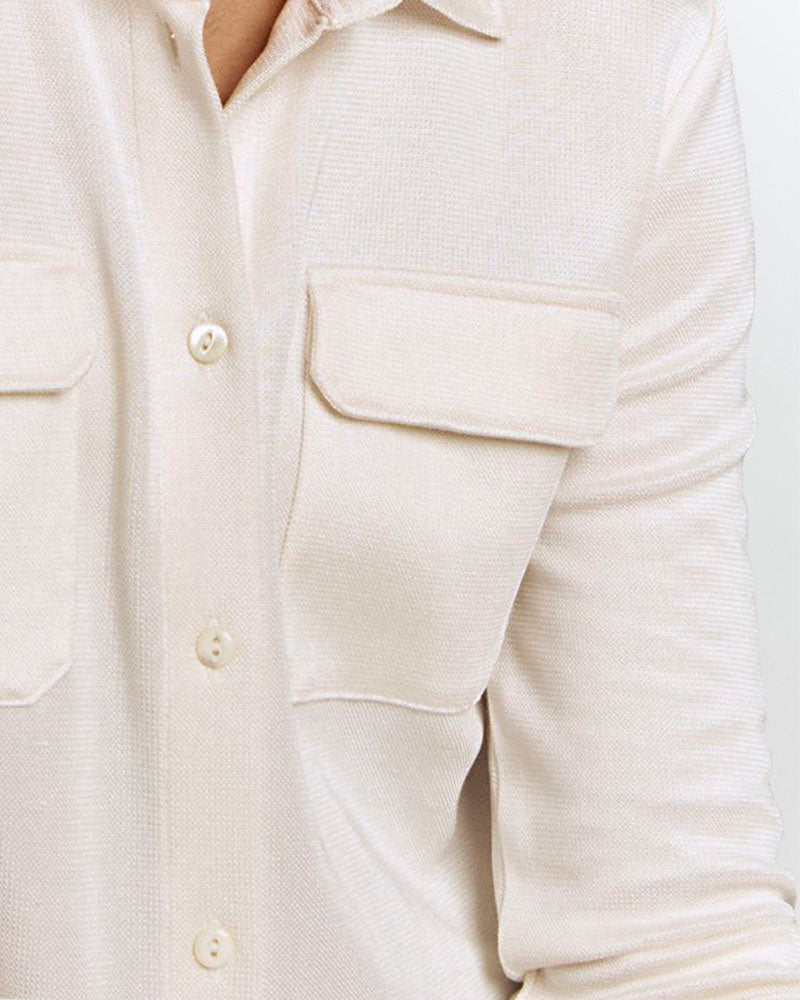THE STYLE OFFICE
The Knitting Guide

KNIT GUIDE
The Alpaca
1 - Wash the silk
Silk is a very delicate material, which becomes even more fragile when wet. This is why we recommend washing by hand, in cold water with a mild soap , without rubbing your garment too much or letting it soak.
If you opt for machine washing, choose a special program for delicate fabrics and at low temperatures. If in doubt, prefer dry cleaning to pressing.
2 - Dry the silk
After washing, air drying your garment is the preferred option. Be careful not to twist your piece to wring it out, but rather wrap it gently in a towel and press lightly to remove excess water.
Then hang your silk piece on a hanger and make sure you don't expose it to direct sunlight , to avoid fading.
3 - Iron the silk
We advise you to iron your garment while still damp , on the inside out to keep its shine and to set your iron to low temperature .

KNIT GUIDE
The Rice Point
The rice stitch is a fairly classic stitch with a lot of relief, with a reversible stitch that looks good on both the right side and the wrong side. It actually alternates knit stitches and purl stitches, creating a "hunchback" stitch.
This is a very textured knit, which we love to use at Devernois, especially for jackets. Be careful not to confuse the rice stitch with the rib , where the knit stitches and the purl stitches are aligned one above the other! This is a knit that may seem fragile, but which is in fact very easy to maintain because it is easily washable and repairable!
KNIT GUIDE
Merino
1 - Wash the mesh
We recommend hand washing for the maintenance of your mesh pieces. Be sure to wash your garment in cold or lukewarm water (no more than 20°) and to use a very mild liquid detergent. Be careful not to pull on the mesh and not to let it soak so as not to risk deforming it. Rinse it gently, always avoiding twisting it.
If you prefer the machine wash option, choose the cold wool program and use a special wool liquid detergent.
2 - Dry the mesh
To dry the mesh, we recommend that you do it flat , on a towel or on a flat surface. Do not dry your mesh on a hanger if it is wet, you risk relaxing it.
3 - Iron the stitch
We recommend that you do not iron your knit , if it has been dried properly this will not be necessary. If necessary, iron very gently on the reverse , taking care not to press too hard so as not to crush the knit.
Be sure to store your knit flat when dry. Hanging it on a hanger could deform your garment.


KNIT GUIDE
The Milano knit
Use this section to create unique side-by-side layouts with various content blocks. Pair text with images, newsletter blocks, products, videos, testimonials and more.
How to make your stitches last?
There’s only one secret to making your knitwear last and wear it for a long time: maintenance! Discover all the maintenance tips from our Style Office here!

KNIT GUIDE
The Jacquard
Jacquard is a weaving (and then knitting) process that has its origins in our region, since it was Joseph-Marie Jacquard, a weaver from Lyon, who gave it birth. He was the forerunner of this mechanical process, which allows the weaving and knitting of complex designs, without any manual assistance.
Jacquard is distinguished by the interlacing of stitches during knitting, creating a design, visible on the right side and the wrong side of the knit, in reverse. This process offers multiple pattern possibilities, from the most traditional to the most modern, like the jacquard stitches in our collections. It is a stitch that is dear to us, since it is at the origin of the success of our House since the 1930s, with the creation of men's jacquard jerseys.
KNIT GUIDE
Viscose
1 - Wash the leather
To clean your leather clothes, we simply recommend that you use a clay stone with a clean cloth or a gentle cleansing milk to apply to a cotton pad and then spread in small circular movements on the garment.
We strongly advise against washing your leather garment in the washing machine, as this could damage it.
2 - Dry the leather
If your leather piece has been wet, we recommend that you leave it to dry in the open air , away from the sun so as not to damage it.
3 - Iron the leather
Leather is a living material that hates water. We therefore advise you to switch off the steam function of your iron. Place a cloth between the iron and your leather garment to avoid direct contact with the heat and set your iron to a low temperature.
To smooth leather, you can also hang it on a hanger in your bathroom : controlled exposure to steam will soften the leather and allow smooth smoothing.


KNIT GUIDE
Kashmir
1 - Wash the linen
To clean your linen piece in the washing machine, we advise you not to exceed 40°C in order not to damage it. Avoid chlorine-based detergents which will tend to yellow and damage the fiber.
If you want to de-yellow a white linen, you can occasionally use white vinegar which will act as a softening cleanser.
2 - Dry the linen
To dry linen, we advise you to hang it on a hanger and let it air dry. Your garment will be even more beautiful and less wrinkled!
If you opt for machine drying, limit it to 600 maximum rotations to reduce the friction of your garment against the drum and any trace of breakage.
3 - Iron the linen
We advise you to iron your garment while still damp, inside out to avoid creases and to set your iron to high temperature (200°C).
To smooth out your linen piece, you can use starch.

KNIT GUIDE
The Piqué Stitch
Piqué knit is a knit that alternates yarn tensions to create a strong, breathable weave, using cotton yarn.
It is easily recognizable thanks to its small raised patterns in the shape of diamonds or aligned squares. It is a fine, supple and very soft knit, quite stretchy and above all, very easy to maintain.
It is a very comfortable knit, very often used in the manufacture of polo shirts for example.
KNIT GUIDE
The rice stitch stitch
Use this section to create unique side-by-side layouts with various content blocks. Pair text with images, newsletter blocks, products, videos, testimonials and more.

